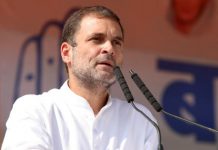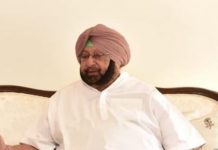Marcus du Sautoy would have you look beyond the numbers and find that mathematics is as much about literature and history. By Ajachi Chakrabarti

Photo: Rohit Chawla
IN 1637, lawyer and amateur mathematician Pierre de Fermat famously wrote in the margin of his copy of Diophantus’ Arithmetica: “It is impossible to separate a cube into two cubes, or a fourth power into two fourth powers, or in general, any power higher than the second, into two like powers. I have discovered a truly marvellous proof of this, which this margin is too narrow to contain.” He was right; it was too narrow. Three hundred and fifty seven years later, when Cambridge professor Andrew Wiles finally proved what became known as Fermat’s Last Theorem, earning him a knighthood and many other honours, the proof was more than a 100 pages long, and incorporated a number of new branches of mathematics created after Fermat’s death; branches that, to a large extent, had been created by generations of mathematicians trying to prove the infernal theorem.
Marcus du Sautoy does something similar when asked to autograph one of his popular books on mathematics. Especially when asked to sign one for a school student, he often prefaces his signature with “2, 3, 5, 7, 11, 13, 17, 19, 23… Find the pattern,” presumably in the hope that some kid somewhere will someday do just that and find a truly marvellous function to predict prime numbers, solving one of the great mysteries of mathematics and rendering all computer security systems, which rely precisely on the lack of such a pattern, redundant.
Du Sautoy, who succeeded Richard Dawkins as Simonyi Professor for the Public Understanding of Science at Oxford, works primarily for students and adults to appreciate the beauty of maths and be inspired to explore the complexity of the subject. “I don’t do my maths because it’s useful,” he says. “Ultimately, it may be useful, but I do it because there’s something extraordinarily beautiful about the subject.” He’s done this by writing books, hosting television and radio shows, and talking to all who listen — and there are quite a few who do — about the power of mathematics. But the real problem, he feels, lies in the way maths is taught in school.
“The one thing that is really lacking in maths curriculum the world over,” he says, “is telling the big stories of maths. We concentrate very much on the technical side of mathematics, but we give students very little insight into what it allows you to access. I think in any other subject in school, such as learning a musical instrument, you’ve got to do a lot of technical things like scales and arpeggios. That’s boring, but necessary, because it gives you the facility to play fantastic music. The thing that a music teacher will do is play for the students the wonderful music they’re aspiring to play. The kid will be inspired to want to achieve a level that allows him to play, compose and create his own music. Then they put in the hard grafting, because you can’t get away without hard work.”
In Goa, du Sautoy was often stopped by people who had heard him speak and wanted him to know that they wished they had a maths teacher like him in school. The difference between university and school maths education, he says, is that in university, you are preaching to the converted — students who love the subject enough to choose to study it — whereas in school, you get a much greater diversity, and the disenfranchisement of the student often means that teachers are talking to them at the wrong level.
“There are many different ways in which people access information,” he says. “You need to use a multiplicity of tools in order to bring each of your students into your ideas. Some people really love technology, so understanding that primes are the key to Internet cryptography or that eigenvalues and matrices are used to run Google, that’ll bring them in. Other people respond to more artistic things, such as music, art or architecture. So showing them the maths in those will be their way in. Some people like history, and the history of mathematics will draw them in. And some people like maths for its own sake. So there can’t be one way to teach maths, and different things work for different people.”
Du Sautoy says he is planning to approach the British government to introduce a course on the literature of mathematics. “I’m trying to talk to the British government and say to them, ‘Why don’t we be the first country to say that yes, we need our kids to know about sines, cosines and logarithms, but why don’t they learn about how Fibonacci numbers are present in nature or the power of prime numbers?’”
Telling the big stories is not useful merely to inspire students, he says. “I understood my subject in a much deeper way by going through the lives of people like (Bernhard) Riemann,” he says, “and understanding things like how he created the Riemann zeta function. It was a bit of a tangential journey. He was interested in a new analytical function he could put complex numbers into, and it somehow unlocked the secret of the primes. I think you learn strategies by understanding how the people in history arrived at solutions.”
He calls it a tragedy when told that most Indian students memorise proofs for examinations, saying that you are missing the whole point if you are learning the proof. “The power of mathematics is that you need no memory,” he says, “because once you actually understand the ideas, you can always reconstruct them. One needs to really wean people off the idea of memorising for exams. This can be done through exams that cannot be answered by pure reproduction of proofs, where you have to understand the proof to answer the question because there’s a slight perturbation. I think it’s really essential that the education somehow celebrates the power of proof as a tool for relieving you of memory.”
Ajachi Chakrabarti is a Correspondent with Tehelka.
ajachi@tehelka.com













